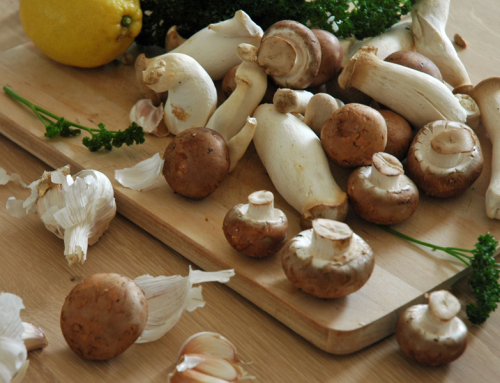The calories do not change between cooked and uncooked eggs as they do with most fruits and vegetables. However, eggs do lose some nutritional value when cooked. When the yolk of the egg is broken (such as when making scrambled eggs) and then exposed to high heat, the proteins and fats of the yolk are damaged, and the fats do become unhealthy. It’s ok to eat scrambled eggs, though. Just just don’t make it a daily habit. Choose poached, hard-boiled, sunny-side up, or over-easy.
Here are the calories for: uncooked, boiled or plainly poached eggs (it is not advisable to eat raw eggs, or sunny-side up eggs, from commercial sources due to the increased risk of Salmonella):
- 1 tablespoon of boiled egg = 13 calories
- 1 ounce (28g) boiled egg = 43-44 calories
- 1 cup (4.8 oz, or 136g) chopped boiled egg = 211 calories
- Peewee (greater than 1.25 oz or 35g) = 50 calories
- Small (greater than 1.5 ox 43 g)= 54 calories
- Medium (greater than 1.75 oz or 50 g or 43 ml or 3 tbsp) = 63-70 calories
- Large (greater than 2 oz. or 57 g or 46 mL or 3.25 tbsp) = 72 -78 calories
- Extra Large (greater than 2.25 oz. or 64 g or 56 mL or 4 tbsp) = 80 calories
- Jumbo (greater than 2.5 oz. or 71 g) = 90 calories
- Large, egg white only (33grams) = 16-17 calories
- Large, yolk only = 54-55 calories
- Large, double yolk egg (whole) = 233 – 237 calories
*Note: Eggs are measured within a size range, not actual size, so calories are only a approximate.
- Eggs are happily high in cholesterol. (See below)
- Eggs contain all 8 of the essential amino acids needed in human nutrition.
- Eggs are a great source of protein with 6.3 grams. This is 13% of the recommended daily value.
- Rich source of vitamin A and potassium
- Rich source of B vitamins like folic acid, choline and biotin
- Eggs are a beneficial source of healthy fat
- The satiety index of an egg is 50% higher than most breakfast cereals, meaning, they keep hunger away longer.
- Egg yolks are the richest source of choline with about 113 mg. Choline is particularly important for brain function and health, as well as reducing inflammation.. It is also a key component of acetylcholine, a neurotrasmitter)that is the body’s primary means of sending messages between nerves and muscles. Our bodies can produce some choline but we cannot make enough. More than 90% of Americans are choline-deficient. Choline deficiency can also cause a folic acid deficiency.
- The proteins in egg yolk help to prevent blood clot formation. The more egg yolks eaten, the more clot preventing action. You can get too much of a good thing, so keep to no more than 2 eggs a day.
- Egg yolks contains high amounts of vision-protective Lutein in an extremely bio-available form, and it is best absorbed from egg yolk, rather than supplements or spinach. Lutein is a carotenoid that may offer protection against age-related macular degeneration and cataracts.
- Egg yolk is a rich source of another vision-protective carotenoid, zeaxanthin, that may reduce the risk of developing age-related macular degeneration.
- The color of the egg’s shell is not related to the quality or nutritional value of the egg inside. Brown or white or green contain the same calories for the same size egg.
The Egg vs Cholesterol Story
Thanks to so much discussion about heart disease, fatty diets and cholesterol, this resulted in public disdain for all fats (even good fats) and cholestrol is also a fat (actually, it’s a lipoprotein), and people started using egg whites as a substitute. However, since dietary advice on cholesterol is often so far off the mark, people actually hurt their health by trying to avoid cholesterol. In a nutshell (eggshell?), they have short-changed themselves, because it is in the yolk that many of the vitamins and nutrients are found.
You see, in order for an organism to grow properly after conception, ALL nutrients need to be available to the growing embryo who is not able to acquire them on its own until it is actually born. In the case of birds, reptiles and most fish, this embryo starts out as an egg…and it lives and thrives in the yolk.
Eggs are high in cholesterol, which is extremely important to the body. Low-fat, low-cholesterol diets can be very unhealthy, especially for women since major hormones are made from cholesterol, such as estrogen, progesterone, cortisol, DHEA, and testosterone. If women don’t eat enough cholesterol, it is diverted from the endocrine system to use for brain functioning and repair. This makes it almost impossible to maintain hormonal balance.
Cholesterol also regulates insulin levels and triggers enzymes that convert food into energy. Cholesterol from food modulates your body’s internal cholesterol production and protects liver function.. There is also evidence that it plays a role in neurotransmitter release in the brain. Cholesterol-reducing drugs may inhibit this release at the synapse and this inhibition could result in impaired brain function. Even though the brain only makes up 2% of our body weight, it contains 25% of our cholesterol. Eggs help feed your brain!
All of the cholesterol in an egg is in the yolk. However, experts have agreed, through numerous studies, that healthy people on a low-fat diet can eat one or two eggs per day without any measurable changes in their cholesterol levels. In other words, eggs do not appear to promote a heart disease risk In fact, blood cholesterol levels have not been affected in studies where people were eating an egg every day.
However, cholesterol levels are more likely to be raised if you deprive yourself of cholesterol, and then make up those calories in carbohydrates and sugar. This forces your metabolism to go into famine mode and your liver overproduces cholesterol to make up the difference, and stores it in the blood. This liver overdrive process does not shut off until you start eating cholesterol again. So, a low-cholesterol, high-carbohydrate diet can actually lead to high cholesterol. The egg has been unfairly blamed!
For most individuals, eggs are a nutritional breakfast choice when compared to the typical American breakfast foods of sugared cereals, waffles, pastries, etc, that are nutrionally bereft. However, diabetics are one of the few groups that should avoid having more than one egg per day as they DO tend to show an increase in cholesterol levels with higher egg consumption, due to how diabetes affects the liver.
The bottom line? Healthy people can safely enjoy eggs without increasing their heart attack risk.
So, the next time you want to know how many calories in an egg, just refer to the chart above, and don’t worry so much about the cholesterol in an egg. Worry more about NOT having your egg.
Ok, so how much an egg does weigh?
Obviously, that depends on the overall size dimensions of the egg, but the parts of an egg can be broken down into percentages and the ratios remain the same no matter what size the egg is, or if it is a chicken, duck, quail, turkey, emu or ostrich egg.
The shell of an egg weighs 9-12% of the total weight. The albumen (known as the egg white) weighs about 67%, and the yolk weighs in at around 33%. So, for a 65 Gram Extra Large egg, minus the shell, which weighs 7 grams, you have a 58 g egg with 39 g of albumen and 19 Grams of yolk.
So, which kind of egg?
Ostrich eggs weigh about 3 pounds and contain around 2000 calories. One ostrich egg is the equivalent of about 24-30 chicken eggs. On a per gram basis, ostrich eggs have the same number of calories as chicken eggs. However, ostrich eggs contain lower cholesterol, lower saturated fat, lower vitamin A and E, lower zinc and manganese, but are higher in magnesium, iron, calcium, phosphorus and thiamine. Both chicken and ostrich eggs are approximately 47% protein and 45% fat. However, serving one is rather problematic unless you are feeding a very large group of people, say, at a church breakfast.
Emu eggs are much smaller, and dark green. The yolk of a large emu egg contains approximately 60 calories, and the egg white contains about 15 calories and yields about 2 cups of egg.. Emu eggs contain 31% saturated and 68% unsaturated fats. Emu eggs contain 55% albumen and 45% yolk. There is very little difference in taste an emu egg and a chicken egg.
Duck eggs are larger than chicken eggs with a harder shell and a distinct nutritional value. They contain about 130 calories, with approximately 9 g of protein, 1 g of carbohydrates and 10 g of fat, 45 mg of calcium, about 3 mg of iron and 619 mg of cholesterol. The yolk is more orange colored and the albumem is more gelatinous than a chicken egg. The color of the egg shell varies depending on the breed of duck and does not affect the nutritional value. They can be found at farmers markets or specialty food stores.
Chicken eggs are the most common commercially available egg in the United States. They contain 37% saturated fat and 63% unsaturated fat, and are about 65% albumen and 35% yolk. One large chicken egg fills about one quarter cup.
Chicken eggs are classified as Grade AA, Grade A, or Grade B.according to the US Department of Agriculture’s grading system and is an indicator of qualities such as freshness, with AA being the highest quality.. Eggs are also labeled according to their size, either extra large, large, medium and small. However, it is not legally mandatory for eggs to be inspected and graded. When you buy farm fresh eggs this is often the case, so get to know the seller and their reputation to be sure you are getting fresh eggs.
Commercial or Free Range Eggs?
Any source of protein, whether egg or meat, should be purchased from an environment that is as close to natural as possible. This means conditions should not be overly stressful, and the birds should be able to move naturally, picking up what it wants to eat. They should not be forced to live in a tiny cage with little movement, stressed to the point of immune system failure and infections, and eating unnatural food pellets with anti-biotic additives that can be passed to the eggs and actually trigger sulfa drug allergies in humans.
So, it is nutritiously advantageous to buy your eggs directly from a farmer who focuses on growing eggs in a healthy, natural environment. “Organic” is close, but, without knowing the actual conditions, may still have less nutrients than free-range chickens.
And the most important fact? Research has shown that free-range chickens produce eggs that are higher in various vitamins and show a greater natural resistance to salmonella.












